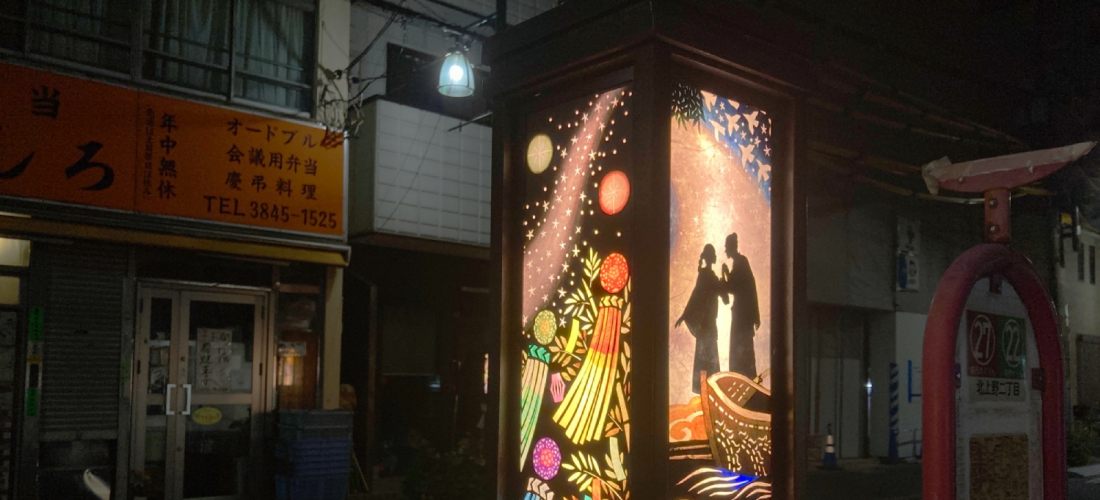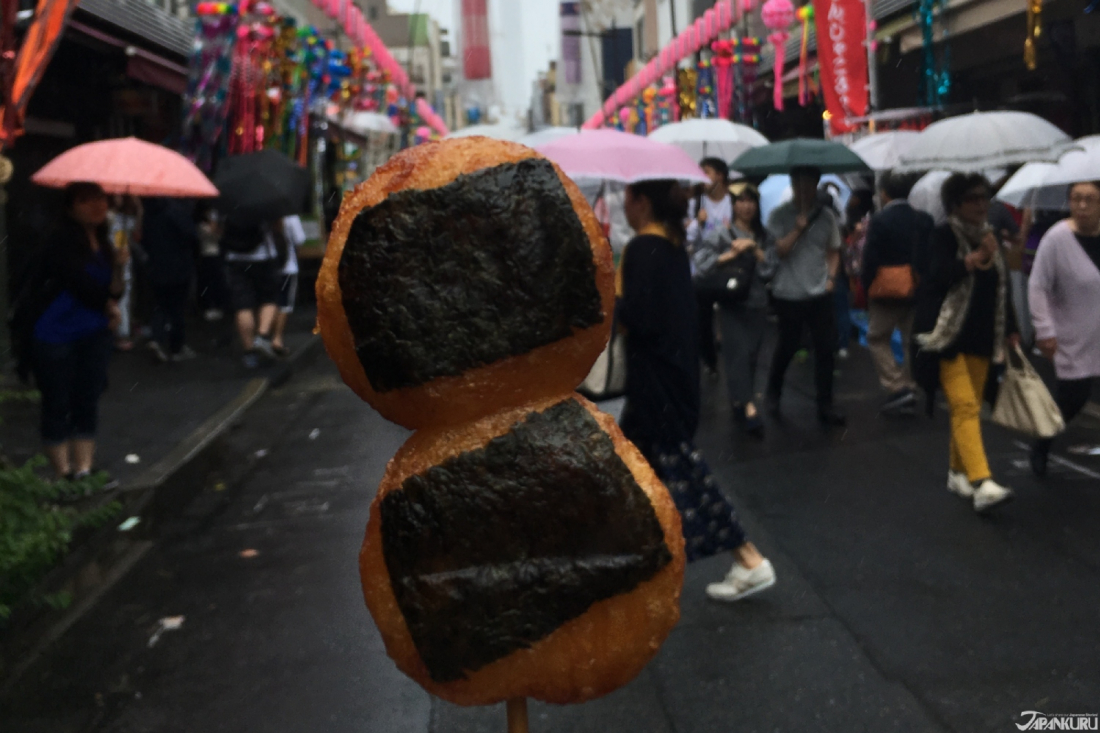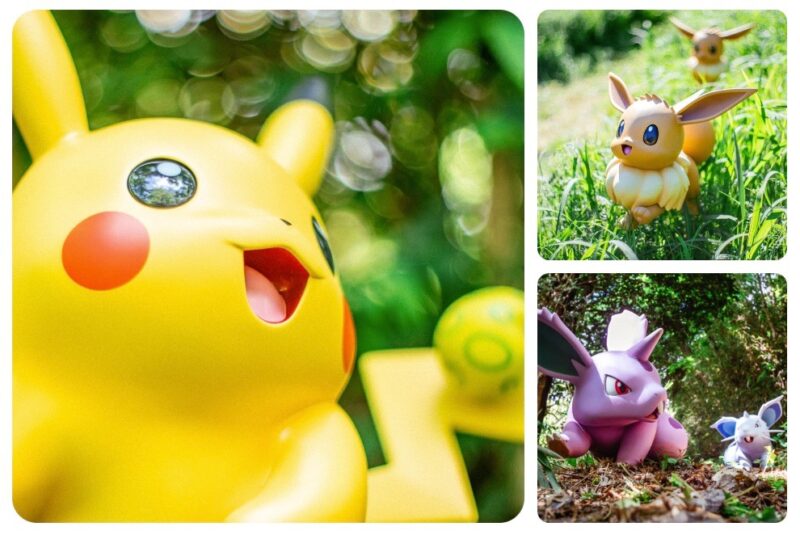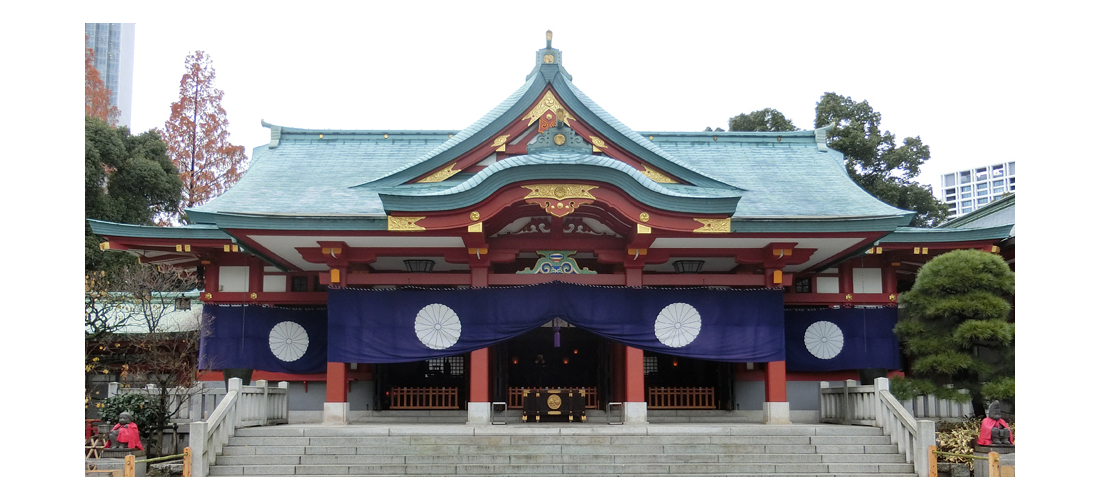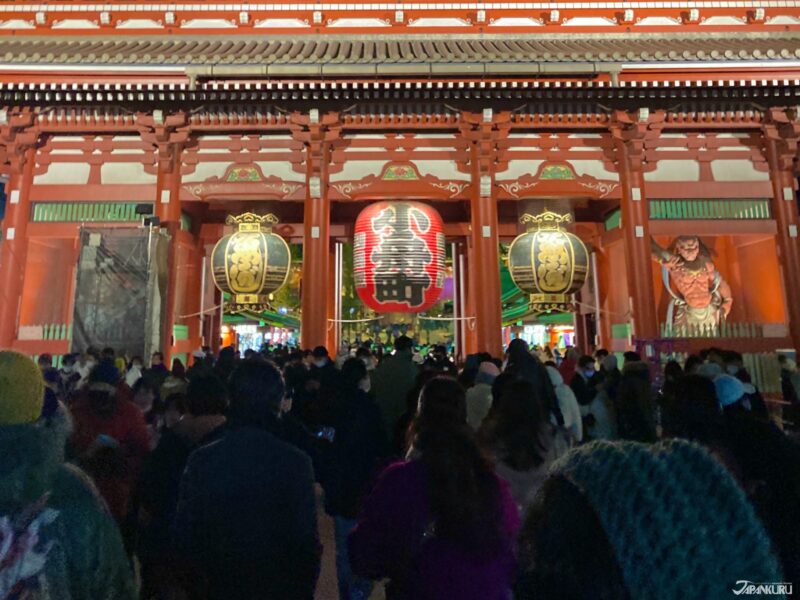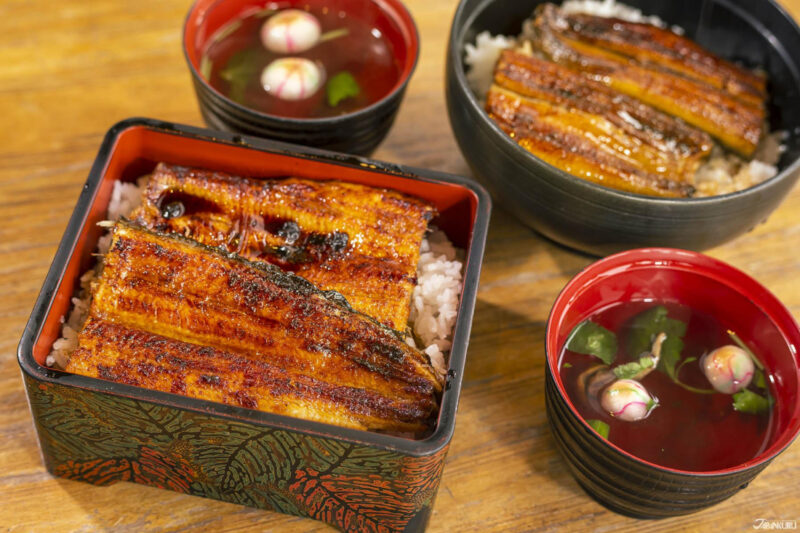CONTENTS
With all the romance of a starry night, Tokyo is filled with ways to enjoy Tanabata!
What Is Tanabata?
All over the world, since time immemorial, people have looked up into the night sky and imagined that the heavenly bodies sparkling above might actually live lives and have stories of their own. In Japan, the holiday of Tanabata comes from just such a magical tale of romance, concerning two stars that really do drift across the sky, Vega and Altair. The legend in question and the associated festival actually originate from China, with evidence as far back as 2,600 years ago, but the tradition was adopted by the Japanese Empress Koken in the mid-8th-century, and celebrations continue to this day. In modern times, Tanabata is a minor holiday celebrated with festivals and local community traditions, and it's sometimes treated a little like a traditional Valentine's Day, harkening back to the story that started it all.
The Tanabata legend tells of Orihime, the weaver star, and Hikoboshi, the cowherd star, and how the love between these two heavenly deities was forbidden (many versions of the story say that Orihime stopped her weaving after marrying Hikoboshi, angering her father and king of the sky, Tentei). Of course, trying to forbid love has never done much to stop it, but the two starry sweethearts were separated and sent off to opposite sides of the "heavenly river," what we might call the Milky Way. Ever since their banishment, the lovers have been destined to meet for just one day each year, the 7th day of the 7th month, when a bridge forms across the milky way and brings them together (in some stories the bridge is made of kindly magpies). Looking up into the sky, the stars of Vega and Altair really do seem to dance around each other out in space, meeting for a short time each summer and then whirling back to opposite sides of the Milky Way. Talk about star-crossed lovers.
How Is Tanabata Celebrated?
When it comes to romance and dreams for the future, even in Japan, it's tradition to wish upon a star! And in this case, the stars are Vega and Altair. One of the most common traditions for Tanabata is to write down your wishes on strips of paper called tanzaku, traditionally used for writing poetry, and then hang the tanzaku up on a leafy stalk of bamboo. Once upon a time, many girls would wish for help improving their weaving and sewing skills, perhaps in hopes of impressing their own Hikoboshi, but these days people write whatever wishes they want, and some will even thank Orihime and Hikoboshi for their help. This part of the holiday can easily be celebrated at home, by picking up some colorful sheets of washi paper for your Tanabata wishes!
Local festivals are another popular way to enjoy Tanabata, and there are famous ones throughout Tokyo, and all over Japan. (The Sendai Tanabata Festival is particularly famous.) These colorful events tend to be highly decorated and beautiful just to walk through, but the best way to enjoy them is usually the same as other Japanese summer festivals: dress up in colorful yukata to match the mood, snack on street food, and enjoy the festive atmosphere! Fortunately yukata are easy to find both in stores and online, and slightly retro yukata have been all the rage in Japan lately. If you're getting your yukata just for Tanabata, though, we can't help but recommend dressing for the occasion in this constellation-patterned yukata, or this starry sky yukata from designer Tsumori Chisato. Kids can even wear little geta sandals with stars, as they enjoy the festival under the starry night sky.
Wait, When Is Tanabata!?
Tanabata festivals often end up kicking off the summer festival season all over Japan, but in some cases Tanabata events are a little too late for that, which begs the question: when exactly is Tanabata? Tradition dictates that the holiday is celebrated on the 7th day of the 7th month each year, the day when Orihime and Hikoboshi meet, to celebrate the stars' reunion. That seems like it should be simple enough, but first, what calendar should we be using? The traditional calendar used by people across China, Japan, and other parts of East Asia relies on cycles of both the moon and sun, and as anyone who celebrates the Chinese/Lunar New Year can tell you, dates do not line up very conveniently with the standard calendar adopted by most of the world these days. According to this ancient calendar, the 7th day of the 7th month often ends up being in early August. But these days many people do prefer to just make things easier and celebrate on the 7th of July, instead. Tanabata only has one official date, but different people prefer to use one calendar or the other, which means that celebrations are split between the two dates each year! Of course, there's no reason not to enjoy the holiday twice every year. Orihime and Hikoboshi certainly won't complain!
Where Are Tokyo’s Best Tanabata Festivals?
In and around Tokyo, there are Tanabata festivals held according to both calendars, which is lucky for any travelers arriving in the city for a summer visit. Twice the dates means twice the chance to celebrate! Events that choose to go by our modern calendar can be found both near Tokyo sightseeing hotspots, and a little outside the city. The Shitamachi Tanabata Festival is celebrated along the length of Kappabashi Street, which stretches between the popular areas of Ueno and Asakusa, making the street easy walking distance from both Ueno Park and Sensoji Temple. The festival is such an ingrained part of local life that the street has Tanabata-themed lamps, which stay up throughout the year as a permanent fixture, their light competing with Tokyo Skytree which sparkles nearby after sunset. When July finally rolls around, the street is closed and vendors set up carts selling drinks and traditional Japanese snacks, and performers parade through the street. It's a fun event in a busy part of the city, but the scale doesn't quite compare to the Shonan Hiratsuka Tanabata Festival, which takes over the area outside of Hiratsuka Station on Tanabata each year, with performers providing entertainment on various stages, and the shopping streets absolutely filled with the colorful streamers that are so common among Tanabata festivals.
Some celebrations that prefer the traditional Chinese calendar, pushing events back to early August, include a couple festivals held in western Tokyo. The Asagaya area is usually fairly quiet and mostly crowded with locals, especially when compared to the somewhat trendy and bohemian Koenji neighborhood next door, but the famous Asagaya Tanabata Festival has been bringing in crowds each summer for almost 70 years. Instead of just sticking to the colorful streamers favored by many festivals, Asagaya's decorations also include huge paper lanterns made in the shapes of anime and movie characters, celebrities, and more! A little farther to the south, the Fussa Tanabata Festival attracts smaller crowds, but their yearly Princess Orihime Contest is unique. Stop by to see this year's Orihime, carefully chosen from a crowd of contestants!
For most people in modern Japan, Tanabata is less of a serious holiday and more of an excuse to celebrate together with colorful festivals, spend a little time with that someone special, and dream of what the future might hold. Wherever you spend your Tanabata, and however you choose to enjoy this summer holiday, we can only hope that Orihime and Hikoboshi take a moment of their starry night reunion to make all our Tanabata wishes come true.
Details
NAME:Tanabata (七夕)
Looking for the latest trends and products coming out of Japan? We've got you covered!
COMMENT
FEATURED MEDIA
VIEW MORE 
A New Tokyo Animal Destination: Relax & Learn About the World’s Animals in Japan
#pr #japankuru #anitouch #anitouchtokyodome #capybara #capybaracafe #animalcafe #tokyotrip #japantrip #카피바라 #애니터치 #아이와가볼만한곳 #도쿄여행 #가족여행 #東京旅遊 #東京親子景點 #日本動物互動體驗 #水豚泡澡 #東京巨蛋城 #เที่ยวญี่ปุ่น2025 #ที่เที่ยวครอบครัว #สวนสัตว์ในร่ม #TokyoDomeCity #anitouchtokyodome

Shohei Ohtani Collab Developed Products & Other Japanese Drugstore Recommendations From Kowa
#pr #japankuru
#kowa #syncronkowa #japanshopping #preworkout #postworkout #tokyoshopping #japantrip #일본쇼핑 #일본이온음료 #오타니 #오타니쇼헤이 #코와 #興和 #日本必買 #日本旅遊 #運動補充能量 #運動飲品 #ช้อปปิ้งญี่ปุ่น #เครื่องดื่มออกกำลังกาย #นักกีฬา #ผลิตภัณฑ์ญี่ปุ่น #อาหารเสริมญี่ปุ่น

도쿄 근교 당일치기 여행 추천! 작은 에도라 불리는 ‘가와고에’
세이부 ‘가와고에 패스(디지털)’ 하나면 편리하게 이동 + 가성비까지 완벽하게! 필름카메라 감성 가득한 레트로 거리 길거리 먹방부터 귀여움 끝판왕 핫플&포토 스폿까지 총집합!
Looking for day trips from Tokyo? Try Kawagoe, AKA Little Edo!
Use the SEIBU KAWAGOE PASS (Digital) for easy, affordable transportation!
Check out the historic streets of Kawagoe for some great street food and plenty of picturesque retro photo ops.
#pr #japankuru #도쿄근교여행 #가와고에 #가와고에패스 #세이부패스 #기모노체험 #가와고에여행 #도쿄여행코스 #도쿄근교당일치기 #세이부가와고에패스
#tokyotrip #kawagoe #tokyodaytrip #seibukawagoepass #kimono #japantrip

Hirakata Park, Osaka: Enjoy the Classic Japanese Theme Park Experience!
#pr #japankuru #hirakatapark #amusementpark #japantrip #osakatrip #familytrip #rollercoaster #retrôvibes #枚方公園 #大阪旅遊 #關西私房景點 #日本親子旅行 #日本遊樂園 #木造雲霄飛車 #히라카타파크 #สวนสนุกฮิราคาตะพาร์ค

🍵Love Matcha? Upgrade Your Matcha Experience With Tsujiri!
・160년 전통 일본 말차 브랜드 츠지리에서 말차 덕후들이 픽한 인기템만 골라봤어요
・抹茶控的天堂!甜點、餅乾、飲品一次滿足,連伴手禮都幫你列好清單了
・ส่องมัทฉะสุดฮิต พร้อมพาเที่ยวร้านดังในอุจิ เกียวโต
#pr #japankuru #matcha #matchalover #uji #kyoto #japantrip #ujimatcha #matchalatte #matchasweets #tsujiri #말차 #말차덕후 #츠지리 #교토여행 #말차라떼 #辻利抹茶 #抹茶控 #日本抹茶 #宇治 #宇治抹茶 #日本伴手禮 #抹茶拿鐵 #抹茶甜點 #มัทฉะ #ของฝากญี่ปุ่น #ชาเขียวญี่ปุ่น #ซึจิริ #เกียวโต

・What Is Nenaito? And How Does This Sleep Care Supplement Work?
・你的睡眠保健品——認識「睡眠茶氨酸錠」
・수면 케어 서플리먼트 ‘네나이토’란?
・ผลิตภัณฑ์เสริมอาหารดูแลการนอน “Nenaito(ネナイト)” คืออะไร?
#pr #japankuru #sleepcare #japanshopping #nenaito #sleepsupplement #asahi #睡眠茶氨酸錠 #睡眠保健 #朝日 #l茶胺酸 #日本藥妝 #日本必買 #일본쇼핑 #수면 #건강하자 #네나이토 #일본영양제 #อาหารเสริมญี่ปุ่น #ช้อปปิ้งญี่ปุ่น #ร้านขายยาญี่ปุ่น #ดูแลตัวเองก่อนนอน #อาซาฮิ

Japanese Drugstore Must-Buys! Essential Items from Hisamitsu® Pharmaceutical
#PR #japankuru #hisamitsu #salonpas #feitas #hisamitsupharmaceutical #japanshopping #tokyoshopping #traveltips #japanhaul #japantrip #japantravel

Whether you grew up with Dragon Ball or you just fell in love with Dragon Ball DAIMA, you'll like the newest JINS collab. Shop this limited-edition Dragon Ball accessory collection to find some of the best Dragon Ball merchandise in Japan!
>> Find out more at Japankuru.com! (link in bio)
#japankuru #dragonball #dragonballdaima #animecollab #japanshopping #jins #japaneseglasses #japantravel #animemerch #pr

This month, Japankuru teamed up with @official_korekoko to invite three influencers (originally from Thailand, China, and Taiwan) on a trip to Yokohama. Check out the article (in Chinese) on Japankuru.com for all of their travel tips and photography hints - and look forward to more cool collaborations coming soon!
【橫濱夜散策 x 教你怎麼拍出網美照 📸✨】
每次來日本玩,是不是都會先找旅日網紅的推薦清單?
這次,我們邀請擁有日本豐富旅遊經驗的🇹🇭泰國、🇨🇳中國、🇹🇼台灣網紅,帶你走進夜晚的橫濱!從玩樂路線到拍照技巧,教你怎麼拍出最美的夜景照。那些熟悉的景點,換個視角說不定會有新發現~快跟他們一起出發吧!
#japankuru #橫濱紅磚倉庫 #汽車道 #中華街 #yokohama #japankuru #橫濱紅磚倉庫 #汽車道 #中華街 #yokohama #yokohamaredbrickwarehouse #yokohamachinatown

If you’re a fan of Vivienne Westwood's Japanese designs, and you’re looking forward to shopping in Harajuku this summer, we’ve got important news for you. Vivienne Westwood RED LABEL Laforet Harajuku is now closed for renovations - but the grand reopening is scheduled for July!
>> Find out more at Japankuru.com! (link in bio)
#japankuru #viviennewestwood #harajuku #omotesando #viviennewestwoodredlabel #viviennewestwoodjapan #비비안웨스트우드 #오모테산도 #하라주쿠 #日本購物 #薇薇安魏斯伍德 #日本時尚 #原宿 #表參道 #japantrip #japanshopping #pr

Ready to see TeamLab in Kyoto!? At TeamLab Biovortex Kyoto, the collective is taking their acclaimed immersive art and bringing it to Japan's ancient capital. We can't wait to see it for ourselves this autumn!
>> Find out more at Japankuru.com! (link in bio)
#japankuru #teamlab #teamlabbiovortex #kyoto #kyototrip #japantravel #artnews
Photos courtesy of teamLab, Exhibition view of teamLab Biovortex Kyoto, 2025, Kyoto ® teamLab, courtesy Pace Gallery

Japanese Makeup Shopping • A Trip to Kamakura & Enoshima With Canmake’s Cool-Toned Summer Makeup
#pr #canmake #enoshima #enoden #에노시마 #캔메이크 #japanesemakeup #japanesecosmetics

⚔️The Robot Restaurant is gone, but the Samurai Restaurant is here to take its place. Check it out, and don't forget your coupon!
🍣신주쿠의 명소 로봇 레스토랑이 사무라이 레스토랑으로 부활! 절찬 쿠폰 발급중
💃18歲以上才能入場的歌舞秀,和你想的不一樣!拿好優惠券去看看~
#tokyo #shinjuku #samurairestaurant #robotrestaurant #tokyotrip #도쿄여행 #신주쿠 #사무라이레스토랑 #이색체험 #할인이벤트 #歌舞伎町 #東京景點 #武士餐廳 #日本表演 #日本文化體驗 #japankuru #japantrip #japantravel #japanlovers #japan_of_insta

Japanese appliance & electronics shopping with our KOJIMA x BicCamera coupon!
用JAPANKURU的KOJIMA x BicCamera優惠券買這些正好❤️
코지마 x 빅 카메라 쿠폰으로 일본 가전 제품 쇼핑하기
#pr #japankuru #japanshopping #kojima #biccamera #japaneseskincare #yaman #dji #osmopocket3 #skincaredevice #日本購物 #美容儀 #相機 #雅萌 #日本家電 #일본여행 #면세 #여행꿀팁 #일본쇼핑리스트 #쿠폰 #일본쇼핑 #일본브랜드 #할인 #코지마 #빅카메라 #japankurucoupon
MAP OF JAPAN
SEARCH BY REGION

LATEST
VIEW MOREEVENT CALENDAR
VIEW MORE





